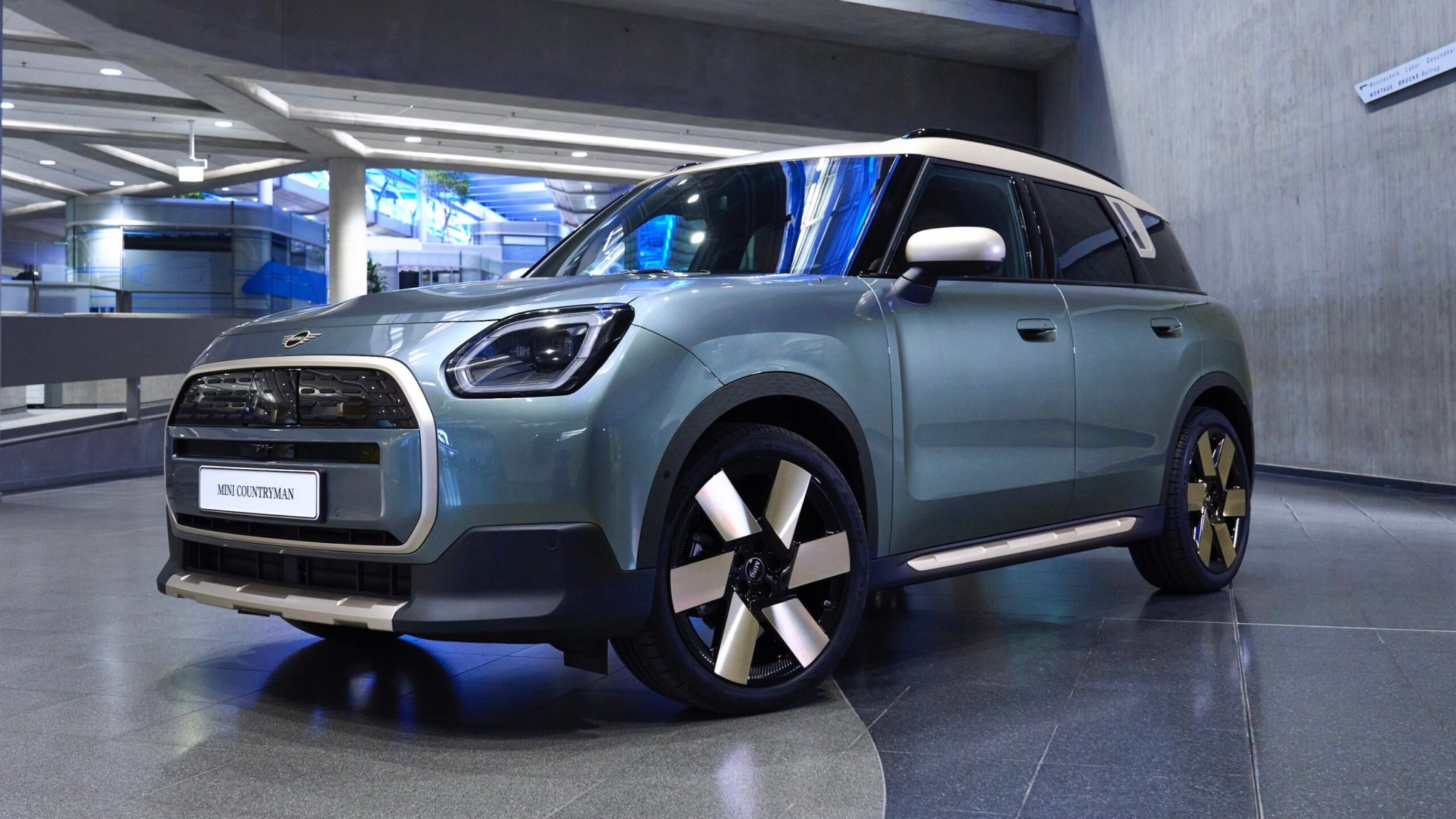

It’s official: The BMW-ification of Mini is complete. The cheeky, premium small cars have shared platforms and engines with their Bavarian cousins for the last decade. Now, the all-new Mini Countryman is the German-British brand’s first car to be made in Germany. Mini announced the start of Countryman production with a press release Monday, and since 2018, parent company BMW has invested some €700 million upgrading the Leipzig plant where the Countryman is now built.
The previous Countryman was built under contract in the Netherlands, while other Minis have been assembled in Oxford, England. The upcoming electric Mini Cooper E and SE will be built in China through a partnership with Spotlight Automotive, as well as in the U.K. to avoid steep tariffs for some markets.

BMW is betting big on the Countryman’s success. It’s the largest Mini ever, and it has a more squared-off aesthetic plus a choice of ICE mild-hybrid (including a JCW model) and electric variants on the same platform. By literally growing the brand, Mini hopes to reach new audiences and secure its future. Right now, it doesn’t sell enough cars to be a mainstream make, and isn’t oddball enough for the cult following that originally embraced it. The Countryman hopes to change that, and there’s a precedent here.


21 years ago, Porsche was in a tough spot, too. It was respected as a sports car maker and motorsport competitor, sure, but it needed to find profits, and fast. Enter the Cayenne, Porsche’s answer to the SUV boom—and its entry into the United States’ most lucrative automotive segment.
People derided the first-gen Cayenne and BMW X5 as dilutions of what made their brands special. But in reality, they made fairly specialized brands relevant to more people—and provided the cash for them to plow deeper into the hardcore sports cars we love. Today, SUVs make up over half of Porsche’s sales, and they’re two-thirds of BMW’s. Like Porsche’s GT cars? They wouldn’t exist without Cayenne sales. Ditto with BMW’s 1M, M2, and M5 CS, which wouldn’t be possible without X3 and X5 sales.
Mini has an opportunity here: Go unabashedly big and capture market share with the new Countryman, then bring some of the profits back and make something great for the fans. The new Cooper E and SE are a great place to start. With 250 miles of range in the SE model, tall windows, and short overhangs, it’s the form factor Mini enthusiasts know and love. It’s also built on a skateboard chassis—meaning Mini could try out any number of styling ideas, from the Superleggera concept of 2014 to the two-seat Roadster, to a micro pickup truck.


Keeping the weight down will be crucial. Mini knows that there needs to be more to EVs dynamically than zero to 60 times, and while weight figures for the upcoming Cooper E and SE haven’t been released yet, the current Cooper weighs just 2,769 pounds—only 400 more than it did in 2002, even with numerous safety improvements. (The current electric Cooper SE weighs 3,143 pounds.)
Back in 2002, Mini showed people that small cars could be fun and interesting. The children of an unhappy marriage between Rover and BMW, the R50 and R53 Minis wrapped excellent driving dynamics and packaging up in Frank Stephenson styling and a killer marketing campaign that convinced U.S. buyers to go small by choice.
It can do it again with EVs. Mini has a chance to show people that electric cars can do more than just accelerate quickly—they can be engaging to drive. With lighter solid-state batteries around the corner, it just has to make some money and double down on the things that made it great in the first place.
I’d love to see a three-door hatchback that weighs less than 3,000 pounds, costs $35,000, and has the right amount of power and handling to be interesting at non-jail speeds. I bet a lot of you would, too. If selling a bunch of nearly two-ton Countrymans allows Mini to build it, is that really such a bad thing?

